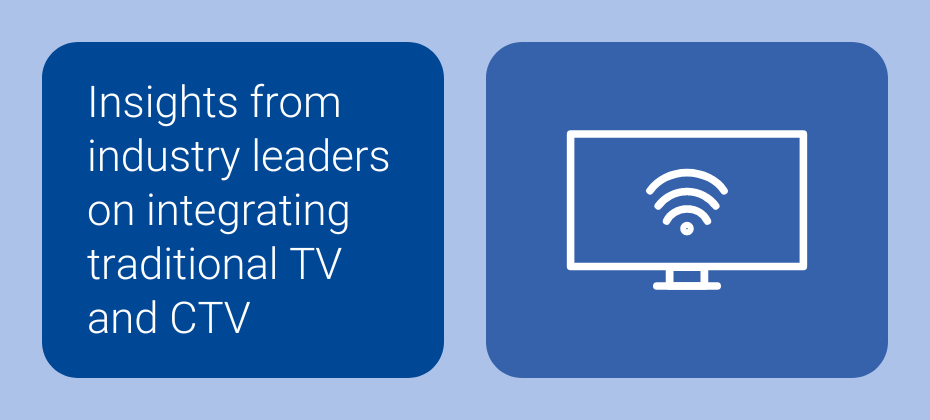“Lorem ipsum dolor sit amet, consectetur adipiscing elit, sed do eiusmod tempor incididunt ut labore et dolore magna aliqua. Ut enim ad minim veniam, quis nostrud exercitation ullamco laboris nisi ut aliquip ex ea commodo consequat. Duis aute irure dolor in reprehenderit in voluptate velit esse cillum dolore eu fugiat nulla pariatur. Excepteur sint occaecat cupidatat non proident, sunt in culpa qui officia deserunt mollit anim id est laborum.”

“Lorem ipsum dolor sit amet, consectetur adipiscing elit, sed do eiusmod tempor incididunt ut labore et dolore magna aliqua. Ut enim ad minim veniam, quis nostrud exercitation ullamco laboris nisi ut aliquip ex ea commodo consequat. Duis aute irure dolor in reprehenderit in voluptate velit esse cillum dolore eu fugiat nulla pariatur. Excepteur sint occaecat cupidatat non proident, sunt in culpa qui officia deserunt mollit anim id est laborum.”
“Lorem ipsum dolor sit amet, consectetur adipiscing elit, sed do eiusmod tempor incididunt ut labore et dolore magna aliqua. Ut enim ad minim veniam, quis nostrud exercitation ullamco laboris nisi ut aliquip ex ea commodo consequat. Duis aute irure dolor in reprehenderit in voluptate velit esse cillum dolore eu fugiat nulla pariatur. Excepteur sint occaecat cupidatat non proident, sunt in culpa qui officia deserunt mollit anim id est laborum.”

“Lorem ipsum dolor sit amet, consectetur adipiscing elit, sed do eiusmod tempor incididunt ut labore et dolore magna aliqua. Ut enim ad minim veniam, quis nostrud exercitation ullamco laboris nisi ut aliquip ex ea commodo consequat. Duis aute irure dolor in reprehenderit in voluptate velit esse cillum dolore eu fugiat nulla pariatur. Excepteur sint occaecat cupidatat non proident, sunt in culpa qui officia deserunt mollit anim id est laborum.”
“Lorem ipsum dolor sit amet, consectetur adipiscing elit, sed do eiusmod tempor incididunt ut labore et dolore magna aliqua. Ut enim ad minim veniam, quis nostrud exercitation ullamco laboris nisi ut aliquip ex ea commodo consequat. Duis aute irure dolor in reprehenderit in voluptate velit esse cillum dolore eu fugiat nulla pariatur. Excepteur sint occaecat cupidatat non proident, sunt in culpa qui officia deserunt mollit anim id est laborum.”
Test Test Test

“Lorem ipsum dolor sit amet, consectetur adipiscing elit, sed do eiusmod tempor incididunt ut labore et dolore magna aliqua. Ut enim ad minim veniam, quis nostrud exercitation ullamco laboris nisi ut aliquip ex ea commodo consequat. Duis aute irure dolor in reprehenderit in voluptate velit esse cillum dolore eu fugiat nulla pariatur. Excepteur sint occaecat cupidatat non proident, sunt in culpa qui officia deserunt mollit anim id est laborum.”
“Lorem ipsum dolor sit amet, consectetur adipiscing elit, sed do eiusmod tempor incididunt ut labore et dolore magna aliqua. Ut enim ad minim veniam, quis nostrud exercitation ullamco laboris nisi ut aliquip ex ea commodo consequat. Duis aute irure dolor in reprehenderit in voluptate velit esse cillum dolore eu fugiat nulla pariatur. Excepteur sint occaecat cupidatat non proident, sunt in culpa qui officia deserunt mollit anim id est laborum.”

veniam, quis nostrud exercitation ullamco laboris nisi ut aliquip ex ea commodo consequat. Duis aute irure dolor in reprehenderit in voluptate velit esse cillum dolore eu fugiat nulla pariatur. Excepteur sint occaecat cupidatat non proident, sunt in culpa qui officia deserunt mollit anim id est laborum.”

Article written by Jill Canetta, Experian Marketing Services’ Chief Data Officer, and Mark Pryzbylski, Experian Automotive’s Senior Director of Product Management At this point, it’s indisputable that the COVID-19 pandemic has completely changed everything for everyone on a multitude of levels. And now that the country is moving toward easing stay-at-home restrictions and people are starting to venture out into the world, auto marketers are faced with unique challenges amid an uncertain future and customers who aren’t sure of the best step to take next in their ownership experience or potential vehicle purchase journey. However, that uncertainty provides an opportunity for brands to make deeper connections with current customers and interested consumers—provided they can understand and address their customer’s needs in a supportive way. You need to lead with empathetic messaging that directly addresses their needs and offers support during this challenging time. Data is the starting point, and Experian is ready to help. First, you need to understand what consumer outlook looks like on a national scale, in real time. Using insights gleaned from consumers across the country, Experian created a US Consumer Sentiment Index built on daily survey findings that outlines what customers are thinking and how they’re feeling during COVID-19. As of June 10th, 2020: 44% have automobile payments they need to make monthly, with Millennials and Gen X leading the pack at 50% 21% are considering buying a new vehicle within the next few months, with Millennials at the forefront of this drive at 16% Of those considering a new vehicle, 63% will continue with their purchase as planned, 42% will buy something less expensive, and 18% will consider leasing, with Gen Z leading the last two these categories Certainly, this data can help auto marketers glean the information they may need to begin targeted outreach, especially when sentiment shows there’s still a need and desire to own, lease or rent a vehicle. But this is only part of the picture. To create a complete view of the customer, marketers need to fill in the blanks so they can thoroughly address their needs and let them know they’re both ready to help, and capable of doing so. For example, due to the changing landscape, it’s unlikely that dealership walk-in traffic is going to present the same opportunities for purchase that it once did. This means marketers will have to leverage new avenues to execute their outreach. Using the power of data, auto marketers can identify those who are most likely to be in the market for a new vehicle, such as those coming to end of lease or those who are soon to be in equity on their current vehicles. But how can this information help you in your outreach efforts? Demographic, behavioral, life event, lifestyle, automotive and attitudinal data can help you tailor a compelling message to address their stage of ownership—and potentially address their new or emerging needs as a consumer. Perhaps their child is starting college in the fall and needs a vehicle. Or maybe they’ve downsized and don’t need an SUV anymore, so a compact car would better fit their needs. When it comes to leaseholders, data can show you which leases are coming up for renewal or termination. Regardless of their situation, leaseholders will need to decide on their future vehicle needs whether it means buying their car, leasing another, or going in an entirely new direction—one that may potentially be more cost effective to address the issues they may suddenly be facing. Beyond identifying your target audience, you need to understand how to reach them. We also offer the opportunity for multi-channel media activation, leveraging our relationships with more than 100 media partners and digital platforms to launch and optimize your one-to-one marketing campaign across all channels. And to help you determine the ROI of your offline and online campaigns, our measurement tools help you gain actionable insights for future campaigns with easily digestible dashboards and reports. As we all adjust to the new landscape and find different ways to navigate the current environment, marketers need to be cognizant of how they’re targeting new consumers—especially when the landscape appears to be unstable. By addressing consumers with relevant and thoughtful messaging that supports their needs, marketers now have the opportunity to create deeper connections that can create loyalty that lasts a lifetime. Learn more about how the Experian Marketing Engine for automotive marketers can help.

It’s been more than two months since COVID-19 was declared a national emergency on March 13 and since that time, consumers have dealt with a lot of uncertainty and fear—ranging from the health and safety of their families to financial stability and beyond. With the prospects of returning to normal changing every day, consumers’ feelings around the pandemic and how they’ve adjusted have also shifted and will continue to do so in the months ahead. But just as the situation has been unprecedented for consumers, businesses are also in uncharted territory. Many have had to adapt operational strategies, while maintaining their ability to service their customers. Now, with stay-at-home orders beginning to lift and the easing of business restrictions in most states across the country, organizations will need to listen to their customers to help inform strategy moving forward, including reopening and operating in a post-pandemic environment. To help, we instituted a survey of the general population to better assess how consumer sentiment is shifting during the pandemic. In the five weeks since the data was made available on April 1, we’ve identified trends across a number of key areas of interest. General observations Less than a third of Americans (29%) are satisfied with their current situation; which has been fairly consistent throughout the five weeks.Women appear to have been quicker to grasp the seriousness of COVID-19 and feel the impact of the pandemic on their livelihood. Overall sentiment among women has improved but still remains lower than men. Americans experiencing minimal impact tend to be:Millennial males, residing in western urban areas who rent.Those less likely to watch the media and spend more time on entertainment.Only 10% of Americans are still willing to take on risk—buying investments and assets. Millennials tend to be more optimistic and actively taking on debt, seeking financial advice, buying assets/investments, considering new vehicle purchases. Retail spending heavily impacted 43% of consumers are cutting back on overall retail spend.Groceries and entertainment are the only categories that have experienced increases in retail spending compared to the past month throughout the five-week period. Spending on discretionary purchases like clothing, shoes, accessories, beauty and wellness has been significantly down for the past month.Baby Boomers and to a lesser extent, Generation X have been cutting back spending everywhere except groceries, but Generation Z respondents increased spending in most categories compared to the past month in the most categories. Americans experiencing financial hardship Half of American households are experiencing financial hardship; though the percentage has improved slightly from the beginning of April. Of those experiencing financial hardship, 74% have concerns about their ability to access food and essentials in the next month.More Americans have a financial reserve they can draw on than a month ago, suggesting consumers are adjusting and reducing their risk. The percentage of Americans who believe their situation will get better in the next month or so has increased. Feelings about healthcare remain consistent 62% of respondents are concerned about visiting the doctor, and 37% are evaluating alternative care methods. Health concerns remain prevalent, but Americans are a little less concerned about filling prescriptions than a month ago. A little more than half of Americans are confident of their ability to pay medical expenses if a family member contracts COVID-19 and requires hospitalization—a small improvement since the survey began (46%). Increased media consumption 58% of respondents are spending more time on home entertainment, including streaming services, social media and video games.The survey shows Netflix has benefitted the most from increased TV/movie consumption; but other services have experienced strong gains. Nearly one-third of Americans have increased their video game play during the COVID-19 pandemic; though the percentage is down from its peak in mid-April.Baby Boomers are more likely to have increased their viewing of Cable TV, but much less likely to have increased consumption of any other media sources.Generation Z and Millennials are increasing consumption of a broader array of media, including Instagram, YouTube, video games, Snapchat, Spotify and Tik Tok. How do businesses move forward? Using insights to inform strategy With much of the focus for politicians, local community leaders and health experts shifting to reopening businesses and public establishments, we have to keep in mind, the post-pandemic environment will look much different than what it was just a few months ago. Just because businesses get the green light to open, there may be hurdles to return to “business as usual.” Consumers’ appetite to resume normal engagement with businesses will vary. For instance, some may opt for curbside pickup or delivery options for retail purchases or telehealth services for routine medical needs. Businesses need to adapt to the customer. In an ecosystem driven the customer experience and human connection, gauging consumer sentiment and preference will be a crucial first step. The road ahead will be long, but the more businesses understand their customers, the better positioned they will be to deliver effective communications and also make strategic investments. What programs and initiatives can be started to better serve customers? What areas can be cut to save costs? Our world was turned upside down the last two months and continues to change every day with still many unknowns. As businesses plan for the next few months and beyond, it’ll be critical to understand how consumer mindsets and behaviors are shifting. Relevancy has always been mission critical, but now, more than ever, businesses need to have consumers at the center of their strategies.

Marketers are always looking for creative ways to get the most out of their digital marketing investments. While there may be different paths to optimization, reducing media spend and cutting costs without sacrificing ROI is ideal. We empower marketers to take back control of their budgets and reinvent their media strategies by leveraging the right data at the right time. And, given today’s challenging climate, there’s no better time. Every Business Has Different Deeds Whether you’re a direct-to-consumer brand building a loyal customer base or a financial service simply letting customers know you’re here for them during a challenging time– identity resolution is essential to connecting with your audience without breaking the bank. That’s why we have built solutions that provide flexibility and control when you need it most. Putting Data Into Action Experian's "Tapad Graph" is a global, privacy-safe cross device graph is one powerful file. Updated weekly, and containing customized device IDs and digital attributes, The Tapad Graph enables smarter targeting strategies and a reduction of wasted impressions. What that means is more marketing efficiency and a stronger ROI for your business. Saving resources and money sound good to you? This guide breaks down four ways you can implement cost savings measures without sacrificing performance or prohibiting KPIs. Frequency Capping and Suppression Clustering device IDs by the individual and household means you have access to more ways to reach consumers, but it doesn’t always mean you should be using all of them across every campaign. Hone in on the channels and devices where consumers make most of their lower funnel decisions and purchases – and cap brand-awareness level placements or aspirational media that requires more exposure to generate engagement. This doesn’t mean limiting the devices you target, but being more aware of how often you’re targeting the same person across those devices. If you’ve successfully begun, or heck, even completed the consumer journey with an individual, congratulations. Now, you may want to consider what to do with the rest of the digital devices and users in that same household. Sure, there’s a time for conquesting an entire home of purchasers, but that’s not always the most effective way to maximize your media. That’s why The Tapad Graph is built to be flexible, providing a holistic view of all individuals and their associated devices and digital IDs – so you can suppress them once you’ve conquested the household decision maker or achieved the desired lower funnel activity. Save those impressions for someone else and save money for yourself. The great thing is whether you’re uploading this data into a DMP or a DSP, you can segment your target audience with a frequency cap threshold or suppress them entirely. Not only can you apply these tactics across traditional digital media, but we can include Connected TVs for OTT targeting as well, making your media strategy as holistic as your identity resolution tactics. Cross-Device Targeting and Attribution Consumer behavior and device trends are changing these days, so shouldn’t your digital marketing change too? Desktop usage is now up as much as 22%* as more people are working and learning from home. And remember that old iPad? With more people at home, we’re dusting off more devices and tablet activity is increasing more than 30%*. Sure, people are still constantly on mobile– but it might be time to consider implementing cross-device targeting and optimization for those dayparts when their focus is elsewhere. Identity resolution should be a key element of customer journey mapping and attribution in order to truly give credit to the right channels and build a baseline for the right cost-per modelling. Coupling The Tapad Graph with raw events data can granularly attribute engagement, actions and conversions at the digital ID, device, and even user-level – thereby teaching you more about your customer’s preferences. Leverage these insights to create more tailored messaging and promotions on your owned and operated channels, to funnel impressions to specific screens and platforms, and to target users based on where they are in the purchase funnel. Data That Gives You Control If you’re already implementing cross-device, have you started suppressing the devices where engagement with your brand isn’t happening? That’s right, you can use The Tapad Graph after-the-fact as well. Weekly graph updates with 60-day look-backs enable weekly campaign optimizations. That gives you the flexibility and control to avoid devices and platforms where users aren’t as active. You can only make decisions based on the data you have in front of you, so make sure you're partnering with the right solutions for your business. Does identity resolution sound like something you need? Contact us and we can help you get started with all that The Tapad Graph has to offer. Get started with The Tapad Graph For personalized consultation on the value and benefits of The Tapad Graph for your business, email Sales@tapad.com today!





